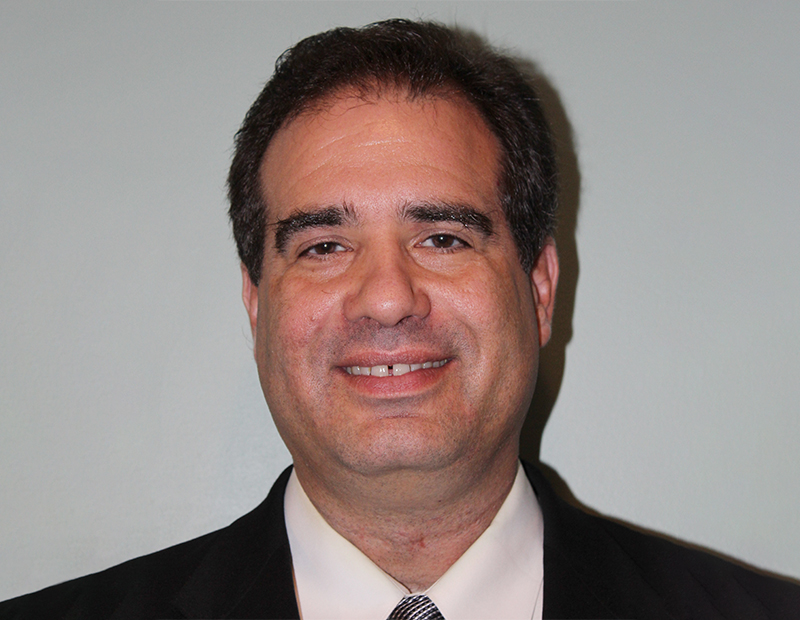Conquering Local Law 97 Post-Pandemic
COVID-19 is creating hurdles to compliance with New York City’s landmark law. Veritas Solutions Group's Robert LoForte and FacilityConneX's Mark Pipher offer solutions.
It’s been one year since New York City enacted Local Law 97, a central part of the Climate Mobilization Act. The first deadline, set for 2024, is approaching fast, but the COVID-19 pandemic has temporarily distracted everyone from initial plans, regardless of how pricey the consequences might be. Demand for energy—alongside greenhouse gas emissions—has decreased in some properties, while in others, it has risen substantially. How does all this bode for New York City’s building owners and the upcoming LL97 deadlines?
We asked Mark Pipher, the vice president & general manager of FacilityConneX and Robert LoForte, the president of Veritas Solutions Group, how New York building owners and managers can best navigate the recovery process post-pandemic, while successfully dealing with the imminent deadlines. The two companies are partners in helping New York building owners create new operational frameworks to overcome the current health crisis.
Local Law 97 was not universally embraced by New York City building owners following its May 2019 launch. How have things evolved in the past year?
LoForte: Last year, we saw building owners note the emergence of Local Law 97, due to its steep fines and emissions reduction goals for all buildings over 25,000 square feet. Since the first deadline is not until 2024, many believed they had more time to prepare, plan and strategize before having to implement changes that would drastically reduce emissions.
With the COVID-19 pandemic creating an unusual and unpredictable situation in 2020 and 2021, buildings now only have approximately three years to fully evaluate their operations and implement the necessary system changes to meet these goals. This has created an increased sense of urgency and worry among building owners who need to make changes now in order to meet the upcoming deadlines, but aren’t sure where to start in order to make the greatest impact.
In the three months since the outbreak, what impact has COVID-19 had on energy demand in NYC?
Pipher: Energy demand varies with the type of building you’re looking at. Hospitals across NYC have ramped up energy use over the last three months in order to meet guidelines for patient comfort, air turns, pressure, temperature, and more, from the Centers for Disease Control and Prevention, the American Society of Heating, Refrigerating and Air-Conditioning Engineers and the American Society for Health Care Engineering. Commercial buildings and universities, on the other hand, have scaled back energy use due to reduced occupancies.
READ ALSO: Energy Demand During Pandemic Times and Beyond
Recent reports from the U.S. Energy Information Administration noted that daily electricity demand across New York State dropped approximately 13 percent during March and April, after the start of the COVID-19 pandemic. This decline is primarily attributed to the reduction of electricity consumption by commercial buildings and energy customers.
How has the pandemic impacted greenhouse gas emissions in the city?
LoForte: With reduced occupancy and fewer people in commercial office buildings, greenhouse gas emissions in NYC have seen about a 30 percent drop. This may sound impressive, but the city is still missing the mark for LL97 compliance by 10 percent, despite occupancy levels during this period down to 2 percent of their pre-pandemic levels. Even more concerning is that emissions will likely spike once we return to the new normal, bringing us even further away from our emissions targets.
 Did the health crisis temporarily steer property owners away from the pursuit of emissions reduction? What does this mean for LL97 deadlines?
Did the health crisis temporarily steer property owners away from the pursuit of emissions reduction? What does this mean for LL97 deadlines?
Pipher: The response to the COVID-19 crisis has rightfully taken precedence over LL97, as we continue to not only manage the virus but also navigate the changes it has created for NYC buildings with occupancy rates and indoor air quality. Building owners have seen some drop off in energy use—albeit not as much as expected—during the pandemic. Universities, offices and commercial real estate projects where operations have been set back, in particular, have already hit this year’s energy use targets for LL97 compliance, and are now concerned with producing similar results next year when buildings are hopefully fully operational again.
READ ALSO: GreenGen CEO Talks Coronavirus, ESG Practices
The uptick and unknown surrounding energy use and emissions during the reopening could make these deadlines difficult, if not impossible, to meet, unless all buildings—not just the highly complex ones—deploy analytics tools that can help them understand, identify and predict energy efficiencies.
Considering the impacts of the pandemic, could amendments become necessary to successfully meet LL97’s requirements?
LoForte: It’s difficult to determine what amendments, if any, will be necessary for LL97 compliance, since the full impact of this pandemic is still being evaluated. Currently, building owners are trying to determine just how much COVID-19 shutdowns, reopenings and operational adjustments have cost them, and what these expenses will look like moving forward, as occupancies are increased and people return to public spaces. For many, finding the capital to meet updated ASHRAE and CDC guidelines and implement energy efficiency upgrades for LL97 compliance is a tight stretch, but some are using this time to completely reevaluate their systems and find ways to simultaneously optimize indoor air quality and energy use.
Are the consequences of unmet deadlines enough of an incentive to push property owners to invest in energy efficiency upgrades?
Pipher: Absolutely. The decarbonization goals are set fairly high to achieve 40 percent in emissions reduction by 2030 and an 80 percent reduction by 2050. Coupled with high fines of $268 per metric ton over each building’s individualized limit, building owners risk having to pay thousands, if not hundreds of thousands in annual fees. NYC buildings have seen the state impose new regulations, including LL87 and LL84, over the years, as an effort to curb emissions and energy use, but LL97 is the first to make failure to comply cost-prohibitive, due to its annual fines.
How can property owners best navigate the recovery process post-pandemic, while tackling the fast-approaching deadlines for a decarbonization mandate?
Pipher: Building owners need to work smarter, not harder. By making the leap and investing in Monitoring-Based Commissioning technologies and services, they can identify and prioritize energy optimization targets and issues within the facility. In some cases, they can see a return on investment in only a year or two, as a result of the energy and maintenance cost savings.
As we navigate the unknown around shutdowns and reopenings, MBCx solutions will provide a safeguard, allowing buildings to become smarter through constant monitoring and intelligent alerting around the health and well-being of the facility. That creates an uptick not just in energy efficiency, but in overall operational efficiency as well—a long-standing goal for many buildings across the nation.
What cost-effective solutions do you recommend for the older buildings in NYC, where energy efficiency was not included in the original design?
LoForte: To address energy efficiency post-coronavirus, buildings need to focus on their HVAC operations, which are changing as comfort and safety become priorities in all buildings, not just hospitals and health-care facilities. Increased ventilation, dilution and incorporation of outside air is necessary to reduce contaminants, but the amount of conditioning needed to do this is costly. New buildings are designed to efficiently bring in this outside air without having to fully condition it, but many existing buildings don’t have this luxury.
READ ALSO: Building Performance Standards Are de Rigueur for the Future
The first cost-effective solution for energy-efficient air optimization is to introduce more efficient filtration and finer filters. This will have some impact on energy use, since fans will need to work harder to push air through these filters in place of conditioning the air.
The second solution is the introduction of ultraviolet germicidal light, installed within the ductwork and air handlers to kill and neutralize organisms like the coronavirus. Because UVGIs are relatively low power, this can decrease energy consumption, while eliminating biofilm buildup.
The last solution, which has little to no impact on energy, is the use of bipolar ionization which, when released, can neutralize contaminants within a space. This approach is still being evaluated, but has shown positive results.
Going beyond HVAC, one of the best solutions to have in your arsenal, which can assess total energy consumption, is MBCx technologies with advanced analytics and fault detection and diagnostics. These technologies are easily implemented and customizable, and enable a more strategic approach to reducing overall energy goals.
Tell us more about Monitoring-Based Commissioning technologies.
Pipher: MBCx systems, equipped with built-in commissioning metrics, FDD and analytics are constantly collecting and monitoring system and equipment data across an entire building or campus. Just introducing a basic MBCx system has proven to reduce energy use upwards of 10 percent, with the potential to save even more on proactive and preventative equipment maintenance.
Real-time analytics monitor systems and equipment data for potential savings opportunities , while FDD with intelligent alerts help to identify and prioritize issues in order of urgency, cost and energy use. With these insights, all of which are easily accessible via any mobile device, staff receives clear direction of what issues exist and where, enabling faster time to resolution, increased operational efficiency and a reduced carbon footprint.
What are the biggest challenges you’ve encountered in helping your clients with new operational frameworks reduce their building’s carbon footprint, and how did you overcome them?
LoForte: To create a building that is capable of making drastic reductions to carbon footprint, it’s imperative to optimize equipment and ensure all systems work together, in harmony. Deviations from intent or initial design flaws could be costing you thousands and you may not even know it, even in new buildings that are LEED-certified and sustainably conscious.
Commissioning, retro-commissioning and energy audits are a must to reduce carbon footprint, but doing so every few years may not be enough to tackle the rigorous LL97 targets. MBCx is what helps our clients optimize their equipment and spot efficiencies in real time to begin stockpiling savings and minimizing energy use almost immediately.










You must be logged in to post a comment.